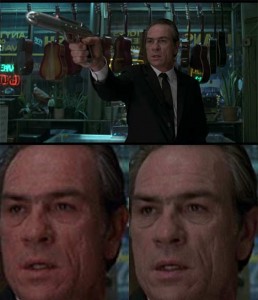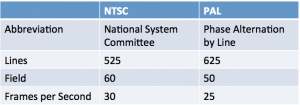Many countries in Asia and Europe are using Phase Alternating Line which is known as PAL while American countries are using National Television Standards Committee which is known as NTSC format. There are many differences between two formats. There was a big difference between Pal and NTSC signal on the old analogue TVs but today most of the TVS are encoding both NTSC and PAL video signals perfect. NTSC and Pal signal difference caused by electrical power system used by countries in 50s. Many countries in America were using electric generated on 60 hertz and NTSC signal was sending as “60 fields” per second. But in Europe, it was 30 hertz and Pal signal was 30 fields per seconds. How many differences are there between NTSC and PAL video systems?
Pal video signal has more quality than NTSC video signal in theory. Pal displays 625 lines of resolution while NTSC shows 525. More lines mean better screen quality and high resolution. It was a phenomenon that what is the perfect way of converting NTSC to PAL. Converters were using black bars while converting the NTSC to Pal and it’s still possible to see in old movies. Today there are still “widescreen” or letterbox modes in TVs for this conversion.
Another big difference between Pal and NTSC is in the color signals. NTSC is the first video format and released in 1941 but in 40s, there were no discussion about color transmissions. Also it was black and white on TVs only and viewers were not noticing any problem. In 70s, color TVs are started to be produced and engineers noticed that NTSC video signal is not sending the true colors to TVs but it’s possible to catch it by only professionals. Pal format is produced after monochrome television is converted to color TV so there was no problem on producing and transmitting true colors. There’s still difference between NTSC and Pal format and when NTSC is not converted into Pal, TVs show the NTSC format as black and white.

There was region lock and region codes in VHS videos because of NTSC and Pal conversion problems. After DVD is released, also region free DVD players are released and they included a hardware which is making instant conversion between formats. But there are also DVD and Blu-Ray with region codes.
In the 50s, many immigrants went America from Europe and they brought also their televisions. It was a big problem that picture quality was lower. Also European immigrants started to bring and sell VHS videos but people were moving “jerky” in NTSC TVs. Some companies released instant conversion kits for this problem. Conversion kits added 5 extra frames if Pal movie is converting to NTSC and removed 5 frames if NTSC is converting to Pal.
Also there were synchronization problems on audio. Because frames of scenes are changed and audio fps is not changed, it was mostly scene was running fast and sound was coming from back. After 70s, new TVs with in-built video-audio converters are released.

There are some researches to break the NTSC and Pal differences and releasing a new video format. But many companies are still releasing their TVs and other devices according to NTSC or Pal. Also there are some works on NTSC and Pal format and developments on these two video formats are continuing.
Many experts believe that even the differences between NTSC and Pal are solved, there will be still some problems on Fps and problems on areas like “Differences Moving Forward” will keep because of formats origins.




